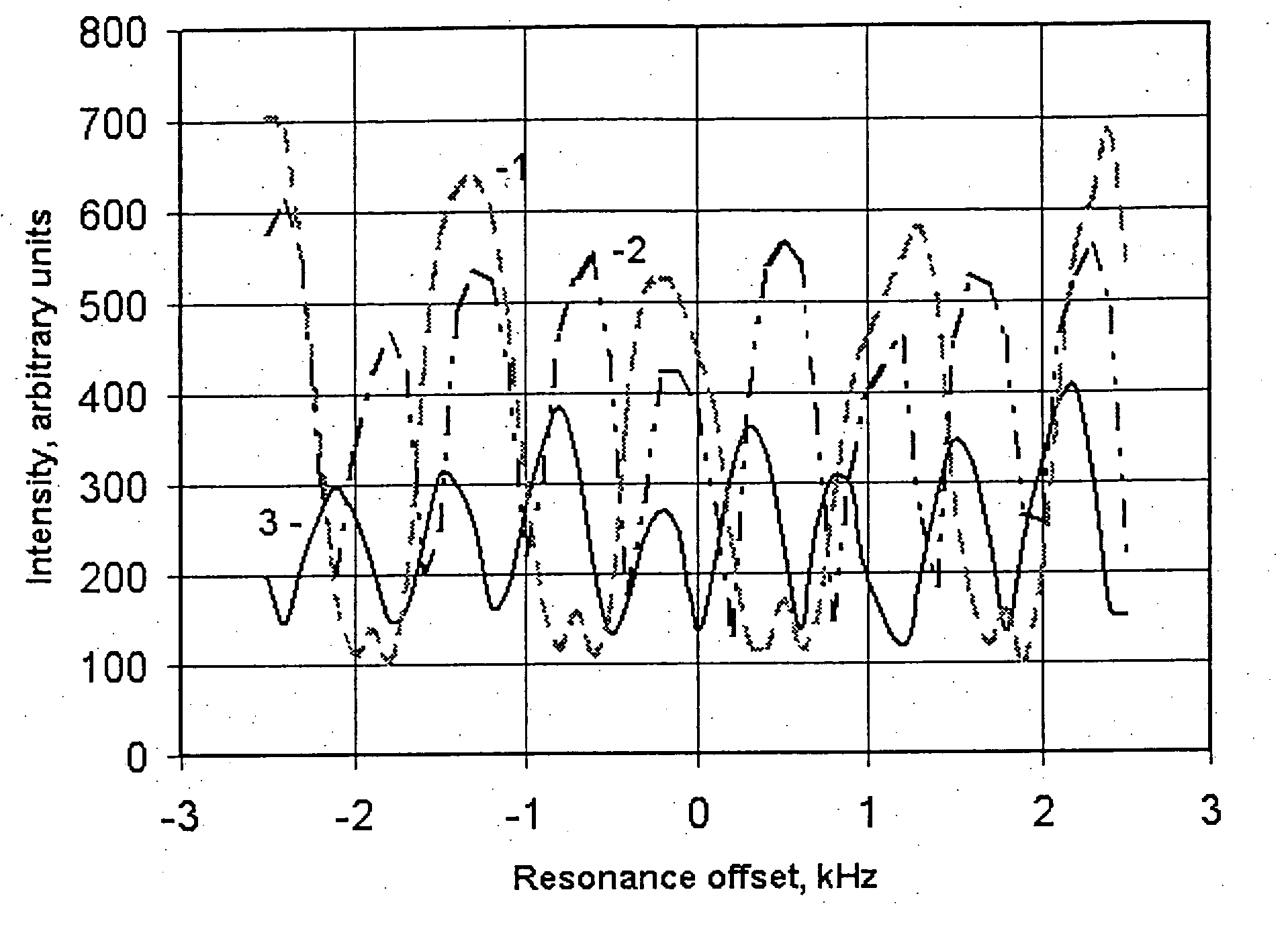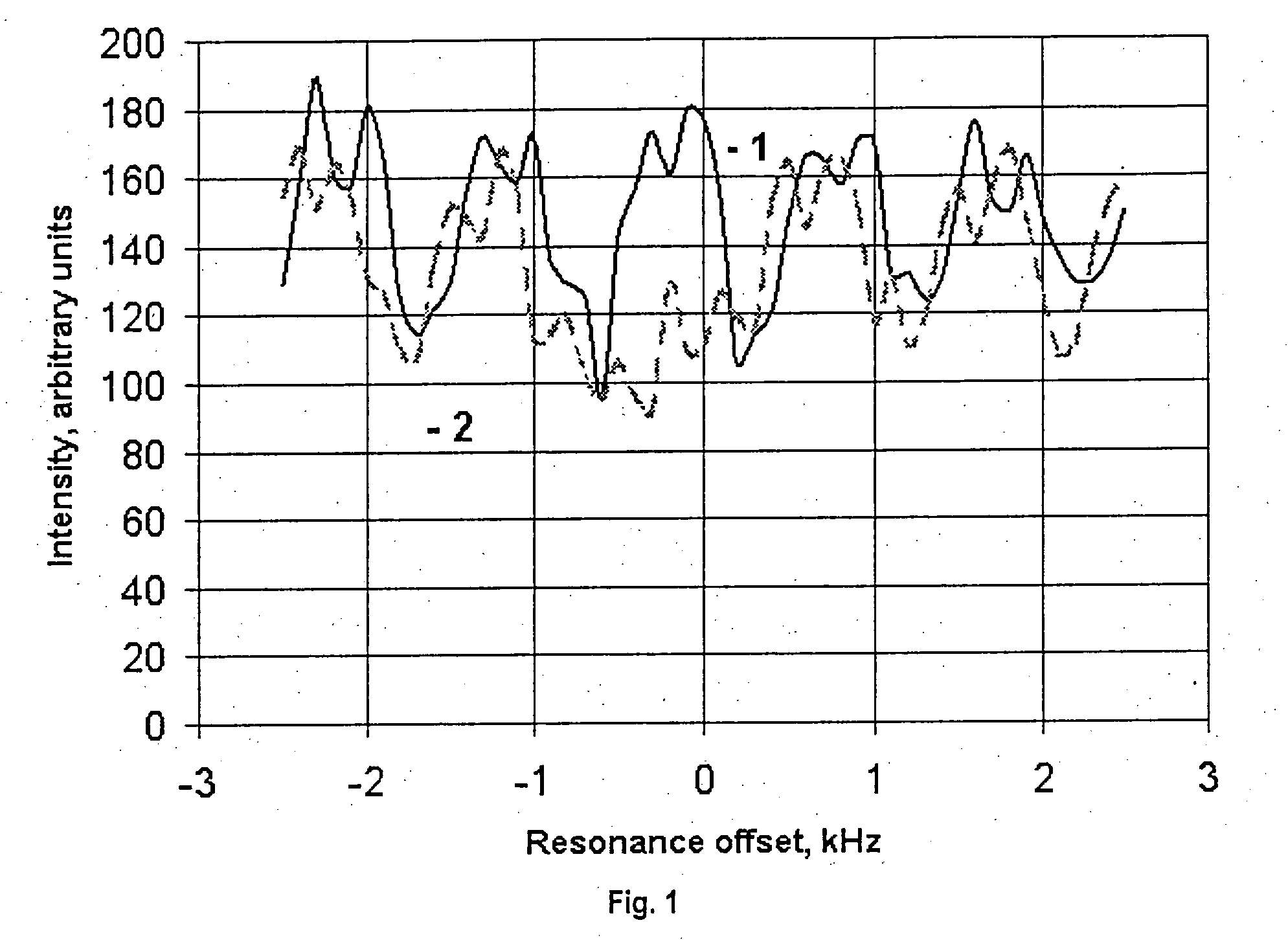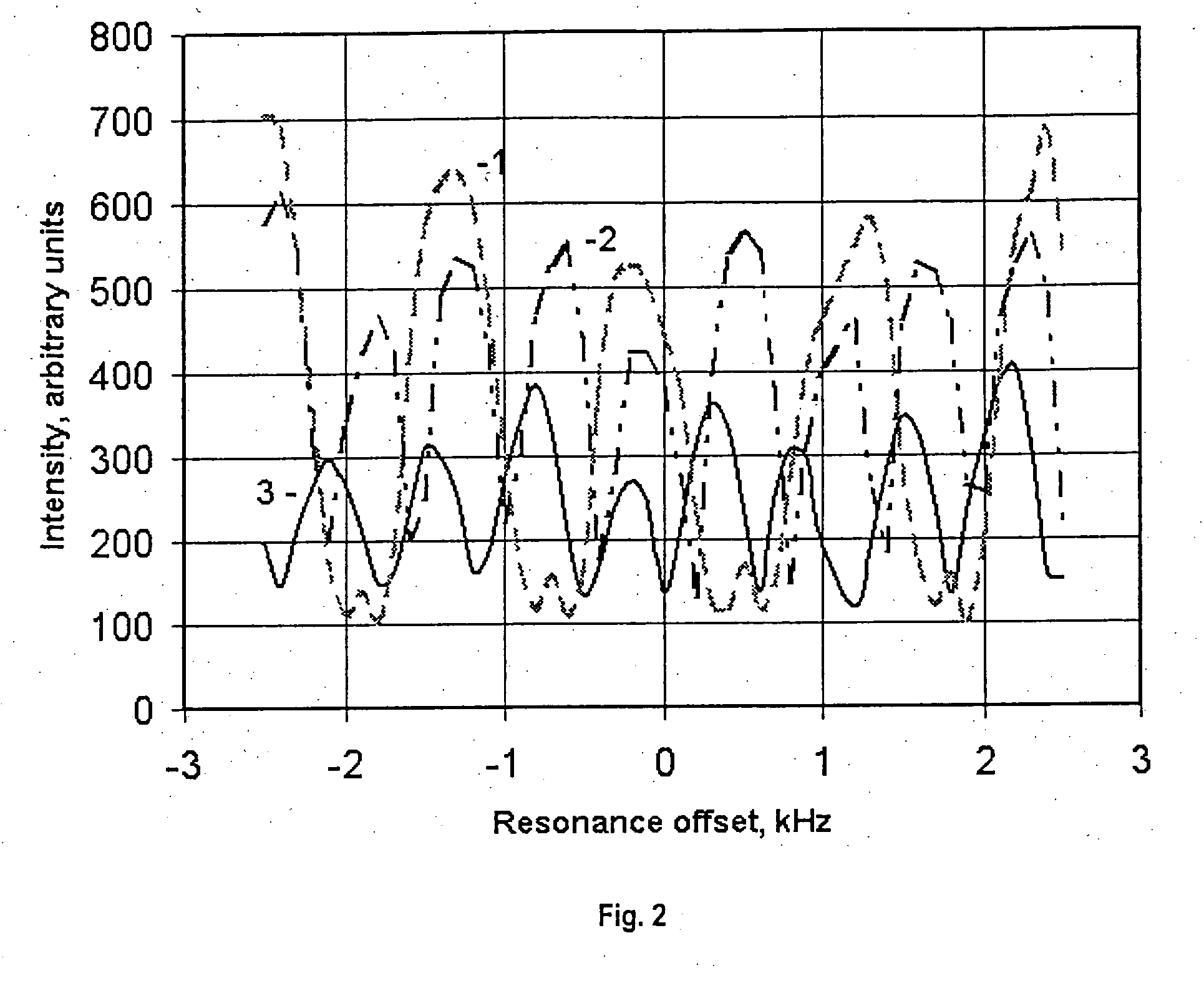Pulse sequences for exciting nuclear quadrupole resonance
- Summary
- Abstract
- Description
- Claims
- Application Information
AI Technical Summary
Benefits of technology
Problems solved by technology
Method used
Image
Examples
first embodiment
[0113]FIGS. 3 and 4 show two examples of the use of the
[0114] In both examples the magnetic field component B1 of the RF pulses was 4.5 Gauss. The duration of the 90° pulse in the powder sample was 68 μs. Experiments were conducted on NaNO2 at the frequency ν−=3.603 MHz at room temperature. The spin-lattice relaxation time for this line was T1=280 ms.
[0115]FIG. 3 shows an example of using PAPS and NPAPS sequences with spin-lattice relaxation preparatory pulses. Curve 1 corresponds to the PAPS and NPAPS sequences with spin-lattice relaxation preparatory pulses, and curve 2 shows experimental results for the same sequences with the same number of accumulations but without the spin-lattice relaxation preparatory pulses (as in the second method described previously with respect to the background art).
[0116] The duration of each sequence was less than 170 ms, and the interval between the sequences was 2 s.
[0117] The parameters of the sequences NPAPS φ0y−τ−(φx−tdelay−Tacq(+x))2n and PA...
second embodiment
[0124] The second embodiment for carrying out the invention achieves a reduction in temperature effects by using a combination of two or more sequences other than PAPS and NPAPS, arranged so that a definite regularity of phase alternation of RF pulses in each of the sequences is equivalent to a shift of the spectrum components of the sequences in relation to each other. At least one of the sequences contains not less than two alternating phases and no sequences are arranged so that a definite regularity of the phase alteration of RF pulses in each of the sequences is equivalent to a shift of spectral components of the sequences in relation to each other. Further, in at least one of the sequences, there are not less than two phases that are alternating and none of the sequences contains a spin-lattice relaxation preparatory pulse or group of spin-lattice relaxation preparatory pulses.
[0125] This embodiment is intended for detecting substances with a relaxation time T1 much shorter th...
PUM
 Login to View More
Login to View More Abstract
Description
Claims
Application Information
 Login to View More
Login to View More - R&D
- Intellectual Property
- Life Sciences
- Materials
- Tech Scout
- Unparalleled Data Quality
- Higher Quality Content
- 60% Fewer Hallucinations
Browse by: Latest US Patents, China's latest patents, Technical Efficacy Thesaurus, Application Domain, Technology Topic, Popular Technical Reports.
© 2025 PatSnap. All rights reserved.Legal|Privacy policy|Modern Slavery Act Transparency Statement|Sitemap|About US| Contact US: help@patsnap.com



